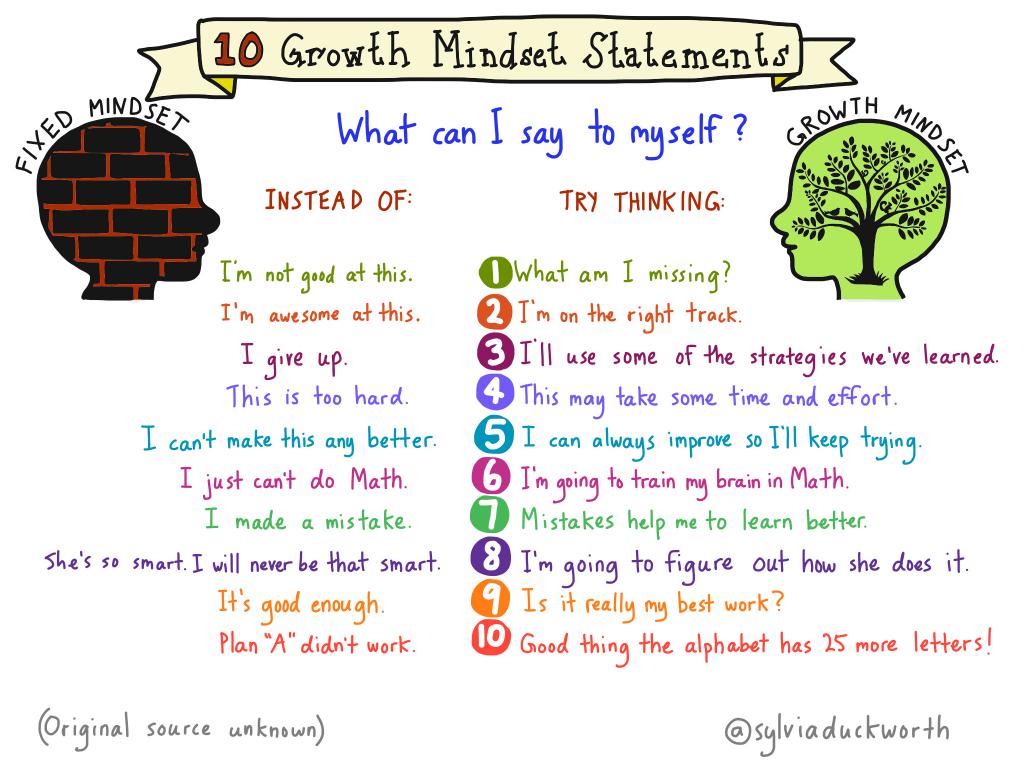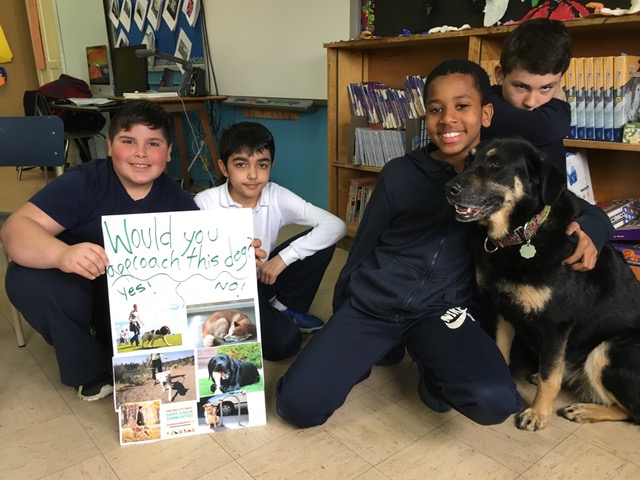In 2022 we are living in unprecedented times with daily climate disasters and the ongoing pandemic madness on top of the ongoing fight for individual rights to bring equity for all. When our students ask, well what can I do about climate change? or inequity? I’m just one person, how am I supposed to change the world! therein lies an opportunity for students to recognize their part in future outcomes. When we look to the ‘changemakers’ for inspiration we can see their small but essential initiatives have altered the world we live in. Now I’m not saying we need to find the next Greta Thunberg or Martin Luther King Jr. but our students can come to realize that systematic change can start with their own small meaningful actions. People just like them, who were given the right support, flourished into changemakers in response to the complex world surrounding them.
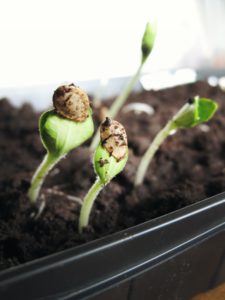
Photo by Jen Theodore on Unsplash
Looking at the Seeds, Soil, and Plant Metaphor, from the Phyllis M. Taylor Center for Social Innovation and Design Thinking, “planting changemaking seeds of curiosity” is about the people, institutions, and phenomena circulating around social problems. Planting changemaking seeds entails cultivating the skills of “budding” changemakers and nourishing them among individuals within a “living community” (Murphy). Not all change will happen within school walls, as students’ communities extend far beyond. I believe that schools must help plant these seeds in the minds and hearts of all our students. Once these seeds are sown the hope is these new ideas will disperse into the culture of our communities at large.
Let’s explore how educators can support budding changemakers.
Mapping Heartbreak
Angela Maiers, educator and founder of the burgeoning Choose2Matter movement says, “DO NOT follow your heart to find your passion and purpose. Instead follow your heartbreak . . . surrendering to your heartbreak is really about finding what really moves you” (Maiers, 2014). It is through this kind of heartbreak that the seeds of change can emerge. Changemakers become the change they want to see because they have been affected by heartbreak and wanna do something about it. In class, teachers can ask simple questions empowering students to map out their heartbreaks asking questions like, “Who is important to you?” “What makes your heart break when you see…?” even “What person has made your heartbreak?” When confronted with our sorrows, action is a natural response. Have a look at a few examples of Heartbreak Mapping.

Photo by Kelly Sikkema on Unsplash
This type of mapping heartbreak is the first small step in creating awareness, once students are aware and able to articulate their heartbreak the seed can begin to grow with the proper watering, of course. Check out a lesson plan on how to conduct a “Heartbreak Mapping” exercise with your students via Learning to Give.
Role Models
No change will occur if students leave their words on a paper and don’t share their heartbreak, because believe it or not most students have similar shared experiences. Oftentimes in life just knowing others have similar heartbreak can prompt change to happen. In keeping with our “seed” analogy, a seed needs water to grow, that water comes from our peers and our shared experiences. So sharing is a pivotal step in our change journey, without it, cross-pollination would never occur and the exercise is just words, or sadly a seed that never blooms. So watering the seed is crucial and what supports this nutrient is often discussing amazing role models that have gone through their journey before.
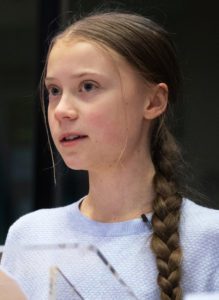
By European Parliament
For example, Greta Thurberg is a role model because she gained a strong voice through her heartbreak about climate change, and choose to share her outrage with her school, her town, city, country, and the world! However, Greta’s journey began with a tiny protest outside of the Swedish parliament when she was 15 years old, but by the age of 16 she was delivering a speech to the United Nations on climate change heard around the world. Anyone of us could be Greta, we all feel this heartbreak on climate change and the frustrating little action that’s done globally to counter its’ deadly effects. But one small voice broke through decades of noise and created an awareness, and in turn a hunger for something better. The Sustainable Development Goals (SDG) is a perfect vehicle to bring global heartbreak and potential action into the classroom. Check out a plethora of SDG resources for educators.
“Never doubt that a small group of thoughtful, committed citizens can change the world. Indeed, it is the only thing that ever has.” Margaret Mead
Social Action
So once our heartbreak is out there, action must follow. Schools are a great place to cultivate action. Again, start small, for example, having more recycling in schools, composting in the cafeteria, growing a school garden, reducing the amount of paper that’s used in classes, all actionable within a school community, supporting the idea that change is in all of us, we just need to nurture it constantly and it will grow.
Through modern times, social media has been a huge influence on awareness of heartbreak and actions that can lead to change globally. The world is flat after all, thus what happens in Brazil, can happen in Montreal, can happen in Japan, and on and on. Let’s look at an example. Around 2015 a new social call to action began called #trashtag challenge, “In the viral post, which has 324,000 shares and 97,000 likes on Facebook Byron Román said ‘Here is a new #challenge for all you bored teens. Take a photo of an area that needs some cleaning or maintenance, then take a photo after you have done something about it, and post it. Here are the people doing it #BasuraChallenge #trashtag Challenge, join the cause.’ ” And just like that social media was leveraged to make the world a little bit cleaner.
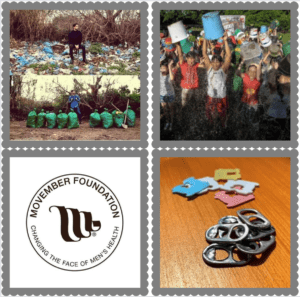 This is one example of hundreds that have begun through social initiatives via media platforms. Movember for men’s health, Ice Bucket challenge for ALS, and of course our milk bag clip challenge that many schools across Quebec still do to this day in support of wheelchairs for those in need. The power to make your voice heard can be amplified via social media when heartbreak is the catalyst. Not only will changemakers be sought after by employers around the world, but as Professor Klomp, vice-chancellor and president of CQUniversity recently explained to Stanford University Review, “for students, the benefits are clear: we create global citizens who take their place in the world and make a difference, but it also makes them more employable, since many governments and organizations recognize that these are the future-of-work skills” (Lara Carton & Tobias Andreasson 2020). Talk about a win-win!
This is one example of hundreds that have begun through social initiatives via media platforms. Movember for men’s health, Ice Bucket challenge for ALS, and of course our milk bag clip challenge that many schools across Quebec still do to this day in support of wheelchairs for those in need. The power to make your voice heard can be amplified via social media when heartbreak is the catalyst. Not only will changemakers be sought after by employers around the world, but as Professor Klomp, vice-chancellor and president of CQUniversity recently explained to Stanford University Review, “for students, the benefits are clear: we create global citizens who take their place in the world and make a difference, but it also makes them more employable, since many governments and organizations recognize that these are the future-of-work skills” (Lara Carton & Tobias Andreasson 2020). Talk about a win-win!
Here are 7 ways to empower student changemakers:
Encourage Each Student to Map Their Heartbreak
Help Students Find Their Voice
Empower Social Media Sharing
Encourage Students to Tell Their Story to a Wider Audience
Foster Student Generosity
Connect Students to Powerful Role Models for Change
Integrate Social Entrepreneurship Into Your Curriculum
Growing our “Sense of” mindset
It’s all fine and dandy wanting social change to flourish in schools, but as with all systematic change, there needs to be a culture that is created that believes anything is possible. By following a line of thinking similar to the Universal Design for Learning framework, students can come to realize everything grows out of one’s empathy, and one’s need to be a part of the solution and not the problem. Empathy is defined in Merriam-Webster as, “the action of understanding, being aware of, being sensitive to, and vicariously experiencing the feelings, thoughts, and experience of another of either the past or present without having the feelings, thoughts, and experience fully communicated in an objectively explicit manner.”
A school culture that practices empathy teaches that change comes from creating; a sense of purpose, a sense of self, and a sense of belonging.
Thus, students need to practice and understand their “sense of” before they can effectively embody them and act upon them. A sense of purpose arises out of one’s passions, similar to the heartbreak mapping exercise we discussed earlier. Students will connect to a purpose when it is meaningful to them. By connecting them to a personal experience that can be acted upon they can find the power to make a better place for not only themselves but for all citizens of the world. This in turn helps students discover their true compassion and humanity through experiences most relevant to the world around them.
When a self-aware student is driven with purpose and compassion, it spreads. Communities become stronger, more proactive, and more flexible when dealing with social injustices, climate change, equality, equity, or whatever else the world throws their way. These blossoming changemakers can’t be stopped once they realize they all have an innate ability to change the world.
Remember, a seed is just a seed until it is fed with a sense of purpose, a connection to oneself, and a sense of belonging in a given community. We all have the potential within. Time to start watering.
Further Resources
Changemaker Tool Kit via Ashoka Youth Venture
Protect Nature Challenge via Government of Canada
Andreasson, L. C. & T., Andreasson, T., Carton, L., & Lara Carton (@carton_l) is associate vice-president (Victoria). (n.d.). A generation of Changemakers (SSIR). Stanford Social Innovation Review: Informing and Inspiring Leaders of Social Change. Retrieved August 30, 2022, from https://ssir.org/articles/entry/a_generation_of_changemakers
Ashoka Changemakers. “Children’s Wellbeing – What Is Children’s Wellbeing?” (2016). Retrieved from https://www.changemakers.com/learning-center/tool/changemaking-101-discovery-framework
Balagopal, S., Bryant, H., Bomba, L., Hodne, P., Liu, T., Lloyd, A., . . . Zakaras, M. (2016). Changemakers: Educating with purpose: By educators for educators. North Charleston, SC: CreateSpace Independent Publishing Platform.
Murphy, L. (n.d.). A theory of change-making: An ecosystem approach – taylor. https://taylor.tulane.edu. Retrieved August 30, 2022, from https://taylor.tulane.edu/wp-content/uploads/2020/02/TP2_TOCMaking.pdf
Featured image photo credit: Photo by Rod Long Unsplash


